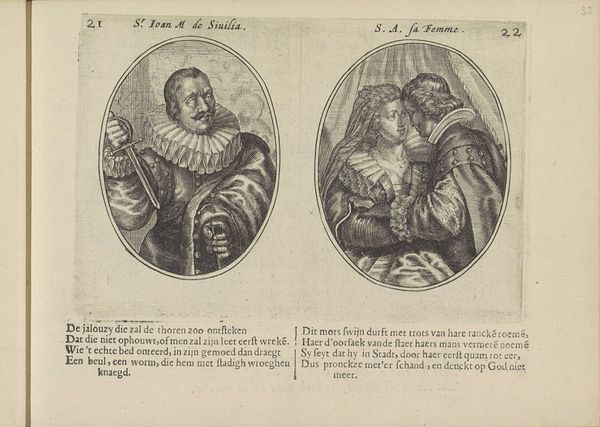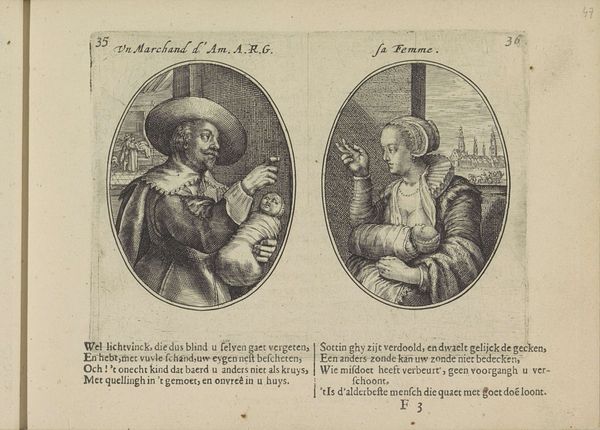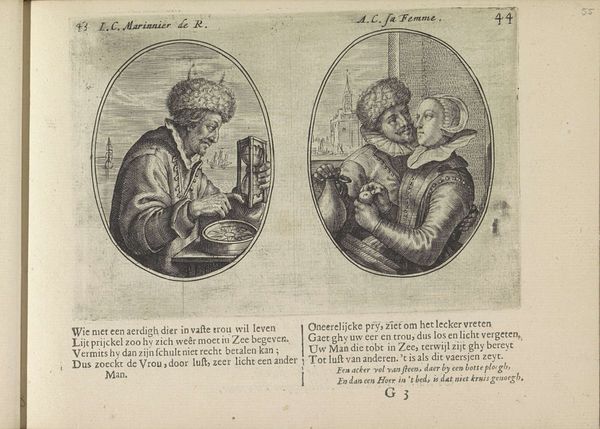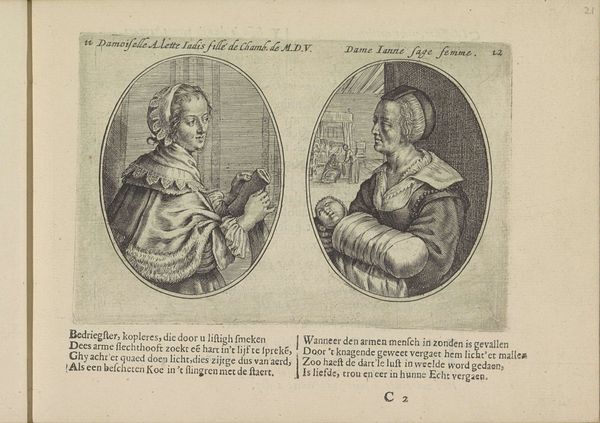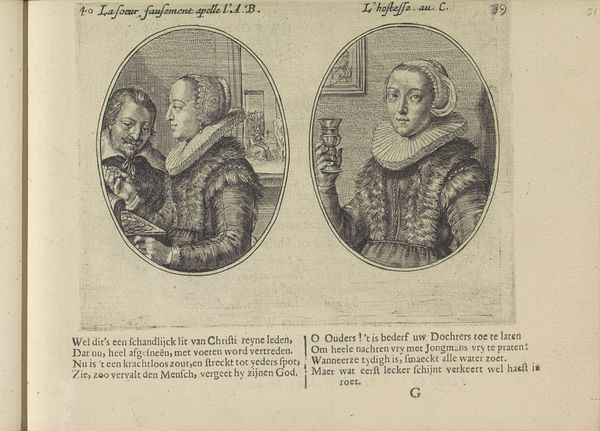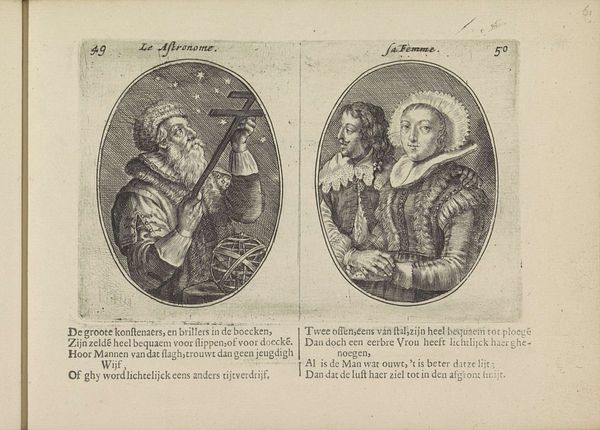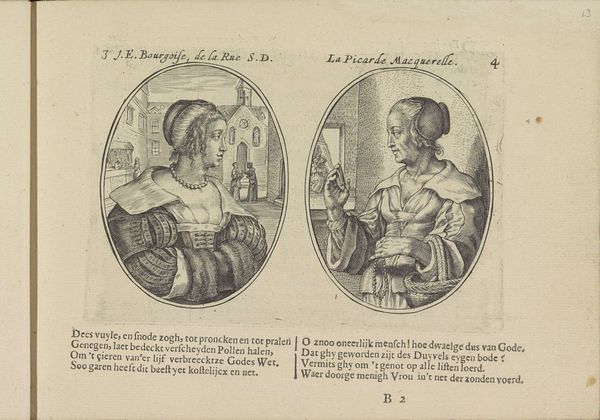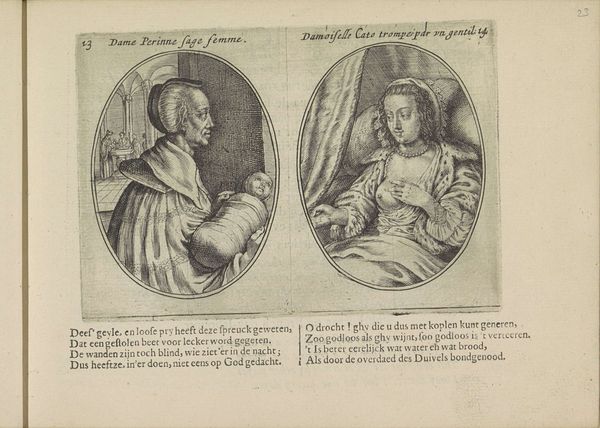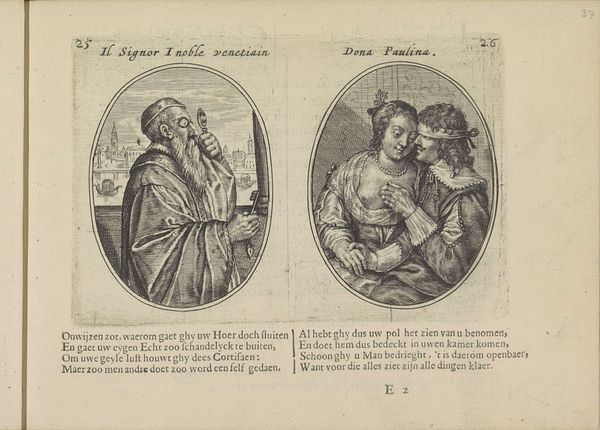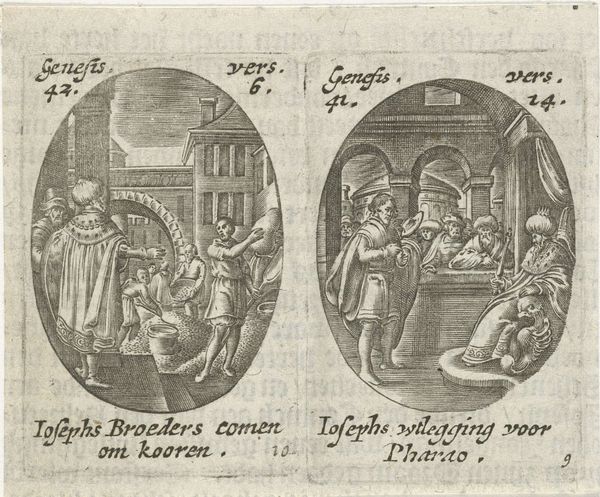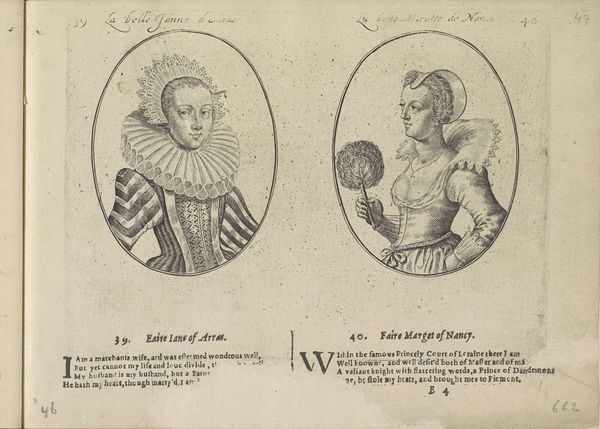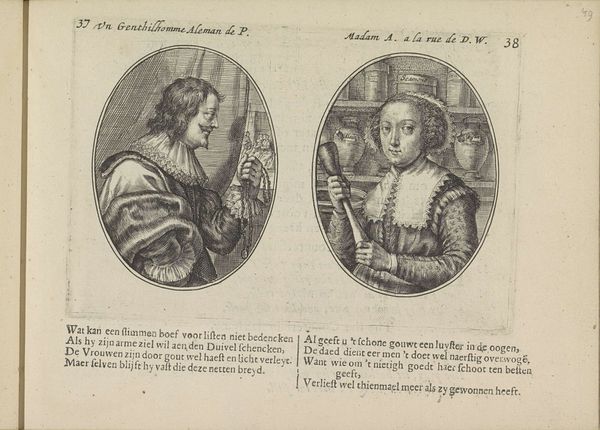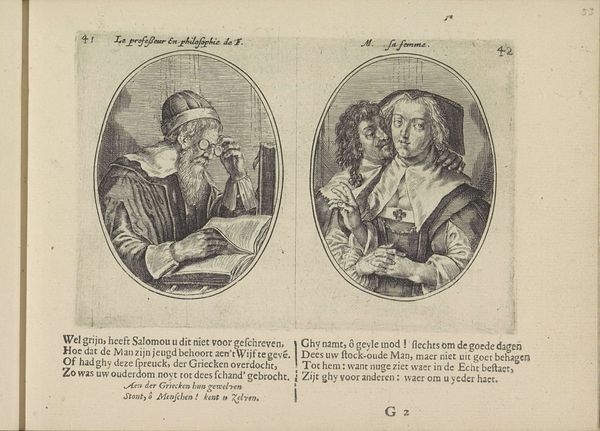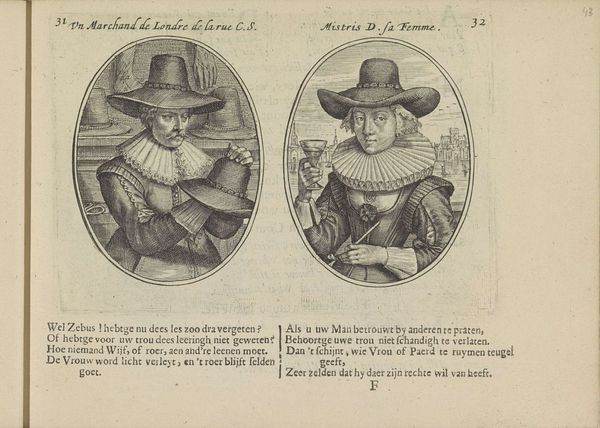
print, engraving
#
portrait
#
baroque
#
dutch-golden-age
# print
#
figuration
#
genre-painting
#
engraving
Dimensions: height 99 mm, width 142 mm
Copyright: Rijks Museum: Open Domain
Editor: This print, "Lapsnijder en zijn vrouw" from 1641 by Crispijn van de Passe the Second, shows a tailor and his wife in separate oval frames. It feels almost like a cautionary tale – the man looks burdened, the wife seems severe. What can you tell me about the societal context surrounding this piece? Curator: It's insightful to pick up on that tension. Remember that the Dutch Golden Age wasn't golden for everyone, and societal expectations weighed heavily. These paired portraits, often commissioned by the burgeoning middle class, visually codified prescribed gender roles. Notice how the setting for the man includes a skyline, referencing his public sphere, while the wife is enclosed inside, signifying the domestic realm. The text below reinforces these positions with social commentary in that era. Do you think the clothing or facial expressions suggest social commentary? Editor: Yes, absolutely! The man's slumped posture contrasts with his wife’s erect stance. His plain clothing emphasizes his weariness, while her fur-lined jacket projects a sharper image. But what about the specific choice of a tailor and his wife as subjects? Was there a particular reason, or was it just depicting everyday life? Curator: Occupational portraits were common, especially among the middle class seeking to affirm their status and moral standing. The tailor, as someone who literally pieces things together, could represent diligence and order, values highly esteemed at the time. The poem beneath the portraits offers a rather didactic message about the ruin brought about by a troublesome wife, so there may be further cultural attitudes being displayed here. How does the depiction relate to other representations of tailors and their wives during the Dutch Golden Age? Editor: That's a great point, it's really interesting to view this through the lens of social commentary. It seems to have opened my eyes to aspects of the work that I hadn't initially considered. Thank you. Curator: And thank you! It’s crucial to analyze how images reinforce or challenge societal norms of their time and consider the historical effects such artworks can have.
Comments
No comments
Be the first to comment and join the conversation on the ultimate creative platform.
